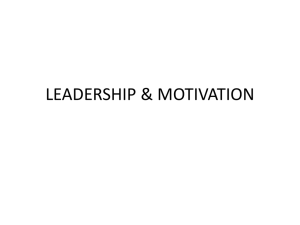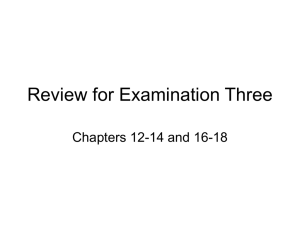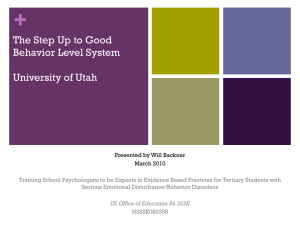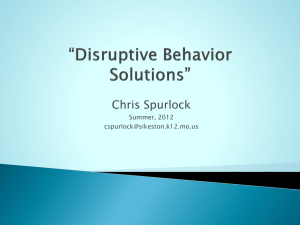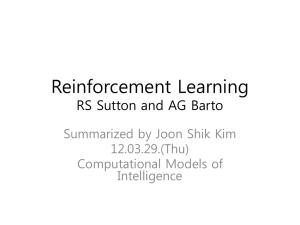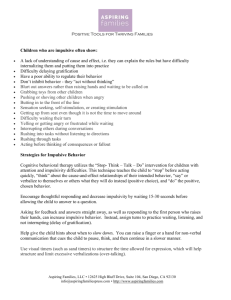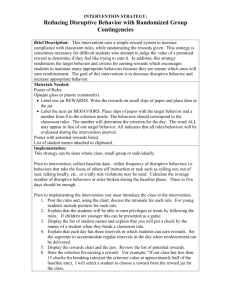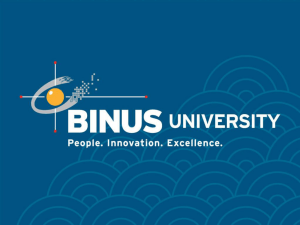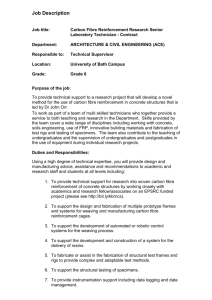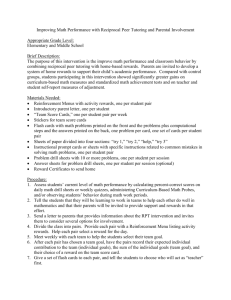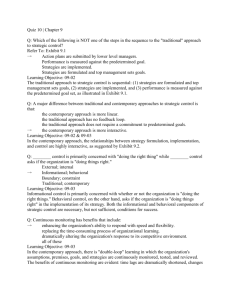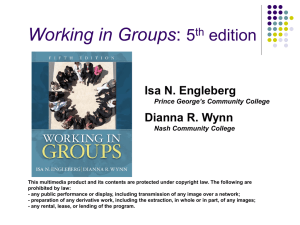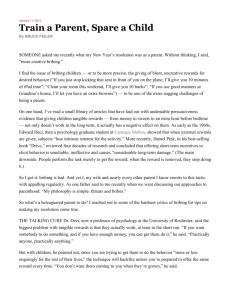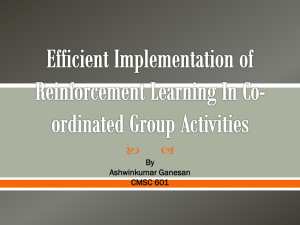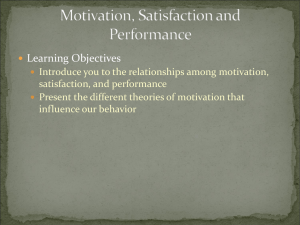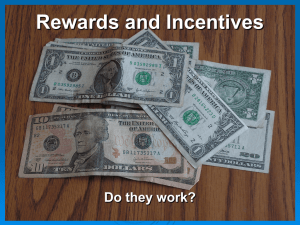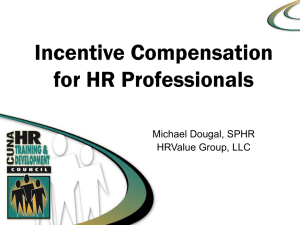Tough Kids: Practical Behavior Management
advertisement
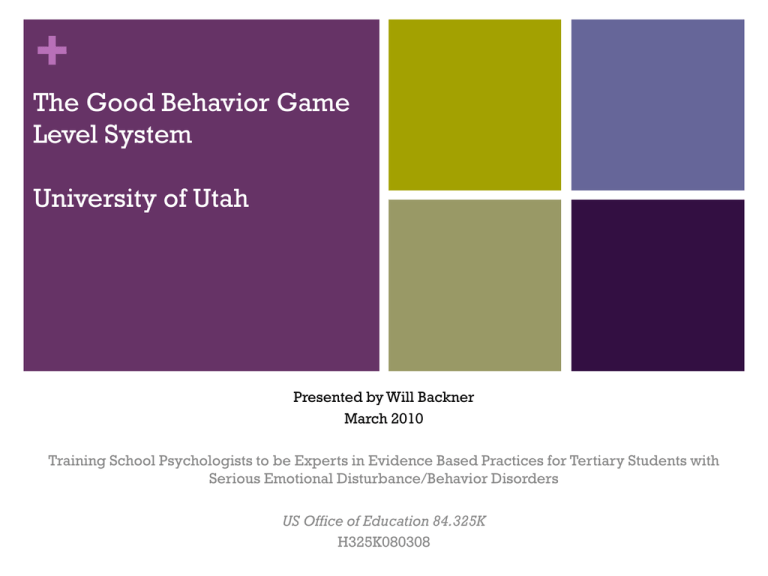
+ The Good Behavior Game Level System University of Utah Presented by Will Backner March 2010 Training School Psychologists to be Experts in Evidence Based Practices for Tertiary Students with Serious Emotional Disturbance/Behavior Disorders US Office of Education 84.325K H325K080308 + Introduction This is a behavioral intervention based on a system of different levels of privileges. There are three levels: Supervision, Trust, and Reward. The Supervision removes privileges and reinforcement. It also removes the student from the environment where problem behavior occurs so that they can succeed. On the Trust level the student is treated like other students. On the Reward level the student receives a special reward or privilege for the day. It is used to reduce problem behaviors in the classroom (aggression, noncompliance, off-task behavior, ect.) that has not been successfully addressed with less intensive interventions. It is designed to be used with early elementary school students (1st-3rd grade) who exhibit problem behaviors and have control over that behavior. + Why This Intervention is Evidence Based Practice No direct studies done on this intervention, but it is based on principles that are evidence based. Verbal Praise Mystery Motivator Behavioral Principles of positive reinforcement and negative punishment + Materials Level Description Game board Level Chart Rewards Menu + Level Description + Game Board + Level Chart + Rewards Menu + Steps for Implementation 1. Determine need for the intervention 2. Customize materials for your student 3. Identify target problem behavior 4. Identify appropriate reinforcers and privileges to earn 5. Identify situation in which the problem behavior occurs 6. Adjust the sample level system so the supervision level is a restricted environment where it is less likely that the problem behavior will occur. This should also be an environment that is undesirable to the child so they will want to progress. 7. For the reward level decide whether you will use a dice or spinner as the randomizer. Fill out the rewards menu with reward the child will want. + Troubleshooting Student is constantly on the lowest level The student should be excited about the intervention and the possibility of receiving rewards on the highest level. If they are not excited the rewards need to be reexamined to ensure that they are motivating for the student. If they are motivated, then the teacher needs to ensure that the supervision level helps remove them from the problem situation. Additionally they need to make sure that they are trying to catch the students being good and giving points when deserved. Finally, the points needed to move up a level may need to be adjusted at first to make it easier for the student and then slowing increase criteria as students improve Student may not have the executive function necessary to inhibit inappropriate behavior. A different intervention would need to be tried. Student earns the number of points to move up a level or stay and then misbehaves. May need to randomize points needed to move up or stay so student keeps trying to earn points. + Cautions For the supervision level you cannot take away things that the child has a right to such as restroom access or food. The supervision level should be undesirable by the lack of privileges and reinforcement that other students receive. It should not include deliberately aversive stimuli. + References
